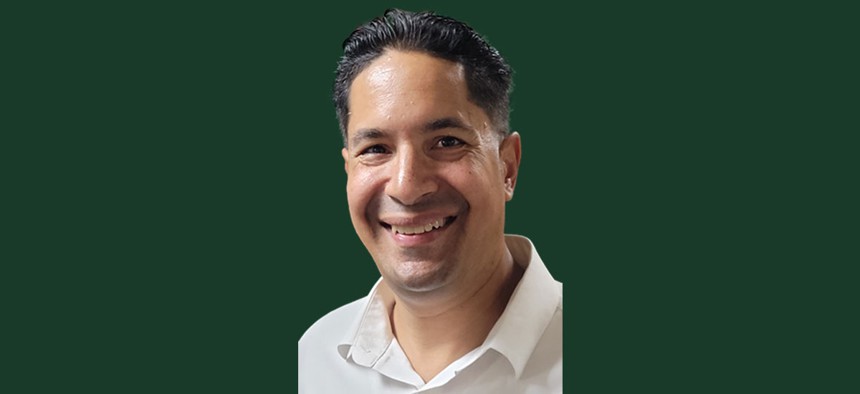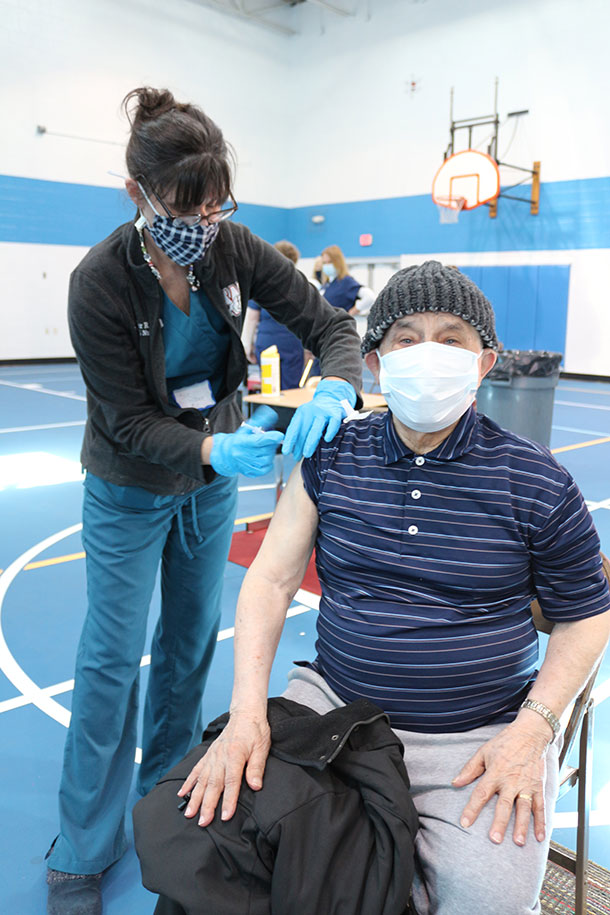Interviews & Profiles
Community. Safety. Education. One Reading nonprofit is working to build all three.
Michael Toledo, who leads Centro Hispano, says his organization provides a safety net for people in the Latino community.

Toledo has been at the helm of Centro Hispano for the last 12 years. Centro Hispano
If you’re unfamiliar with the 222 Corridor, it’s the heart of the commonwealth’s Latino community. Named after Route 222, which spans from the Lehigh Valley, past Reading and down to Gettysburg, the corridor is home to more than half of the state’s Latino population. Reading has been the center of Latino population growth in the state, with more than 80% of the school district’s student population now identifying as Latino.
And one of the biggest supporters of Reading’s Latino community is Centro Hispano, a nonprofit led by President and CEO Michael Toledo. Centro Hispano seeks to provide safety net services to those in need. In an interview with City & State, Toledo discusses his center’s programming, the growing voting power of the population, and how the Latino vote could impact election results in November.
This interview has been condensed and edited for length and clarity.
You’ve been leading Centro Hispano for more than 12 years now. How have your operations and programs changed during that time?
Our mission at the Hispanic Center is to help improve the quality of life for the consumers and the families that we serve. Over the 12 years, the needs in the community have evolved and have changed, but core to our mission is just making sure that we're able to connect families to services and resources that will help them to improve themselves – whether it's support around housing, work readiness, education support or resources, or safety net services ... All families are living with different crises in different ways. We just try to be that conduit in the community to help direct them or to help support them directly if we have the means and the resources to do so.
What have you been focusing on most recently in terms of programming?
We’ve been more engaged and involved around education. We’re trying to help our community to understand the importance of other community-led education agenda so that our community has a voice and a say in what they believe their children should be educated on, or what should be done more in the education space to meet the needs in our community.
We had some community conversations and came away with a myriad of different things that the community was interested in, three that we're focusing on right now. In the area of English as a Second Language (ESL), the need for our Latino community to want to learn English. In early education, the need to provide more resources for children before they enter kindergarten so that they reach the kindergarten (learning) level. And the need for more after-school programming to keep youth off the streets.
How much do community support and volunteer work play a role in your operations?
We have a full-time staff; we have part-time staff; but we also have volunteers that come in to support us. So that's huge, because everything we do is programmatically driven. The funding we receive is for program-specific initiatives. With the volunteer piece, the community coming back and helping support the organization through programming is invaluable.
On the topic of community support, what are you hearing from staff and community members about the issues they’re worried about most this year?
The Latino community is no different than the overall community in the country. They want the same things. They want safe neighborhoods. They want schools that are going to teach their children and give them the tools that they need to succeed in life. And they want the opportunity to be able to be prosperous, whether it's (having) family-sustaining jobs or an opportunity to strengthen their families and support their families in the community.

We're hearing the challenges that our community is facing with the cost of inflation. The housing costs are increasing and the need for job skills – the need to try to enhance their skill sets is something that we're hearing. The pandemic left quite a mark on our community. There are still folks that are challenged and struggling with mental health and emotional health. For very young people, this is something we hear and see a great deal of – the need to be able to provide more resources out there to help people and to better meet the challenge of dealing with mental health.
It seems like most voters are worried about more everyday issues such as the cost of living, education and public safety, but many politicians are caught up online fighting these culture wars. Would you agree?
That’s exactly right. You ask the common person what they want, again, they want their children educated. They want their neighborhoods to be safe. They want to be able to support their families with a family-sustaining wage. And they want to be able to give back to the community that they serve. That's really what it is at its core. Anything else is out of touch.
Looking at your elected officials, what does it mean to the Latino community to see lawmakers coming from similar backgrounds representing them at the city and state levels?
It's a trend that was inevitable. Demographics have changed incredibly over the last 20 to 30 years. When I went to school here, in the Reading School District, I can look back at school pictures and I can see that I was one of three students of color in the classroom. Today, (nearly) 90% of the students identify as Latino or Hispanic in the Reading School District.
It was inevitable that you're going to start seeing the diversity, across cultures, across professions, and obviously involved in elected offices and people representing our community … (Our community is) going to be upfront and honest with those that want to represent us … I don't know if there's any other city or town in the commonwealth that can boast the diversity that we have here in Reading from the mayor's office to the school board, to the county office to the state office. And we're talking across parties, as well. It just shows you the richness of the diversity that we have here in Berks County. And the fact that Latinos are not a homogeneous group. We are as varied as from black hair and brown eyes to blond hair, blue eyes – from conservative to liberal and everything in between.
Recent trends have seen boosted voter registration numbers among Republicans in the commonwealth. Have you seen this among Latino voters and does it surprise you to see this shift?
I'm not surprised by it … It just comes down to their cultural beliefs and what they stand for. I think you'll always see diversity in terms of political affiliation depending on where they're from, whether they're coming from the Caribbean, Mexico or from Central America.
We're doing all we can at the Hispanic Center to try to educate our Latino electorate to engage our Latino electorate so that they understand the importance that they're voting. We want them to understand that they have a voice and they have the right to use that voice.
NEXT STORY: This week’s biggest Winners & Losers
